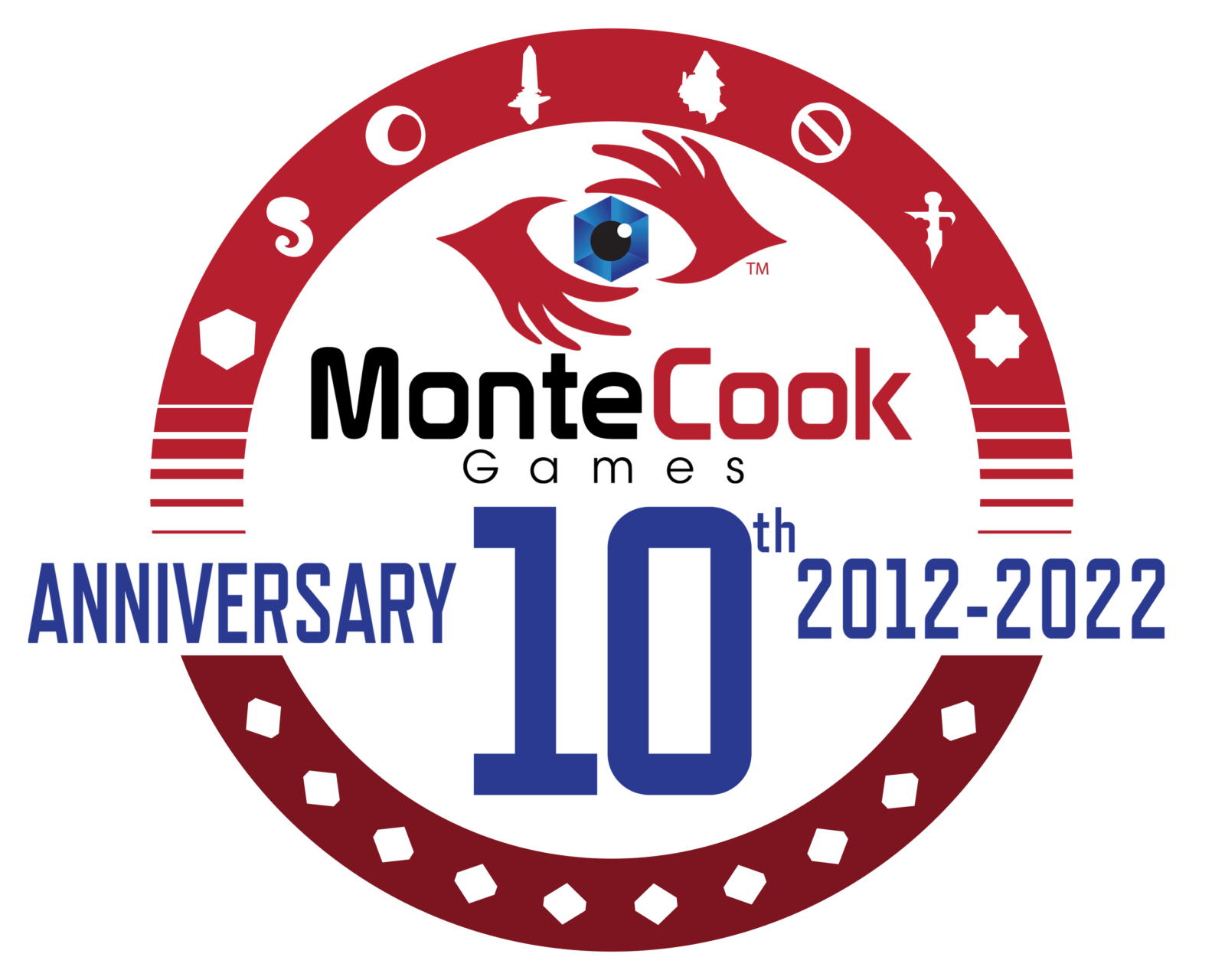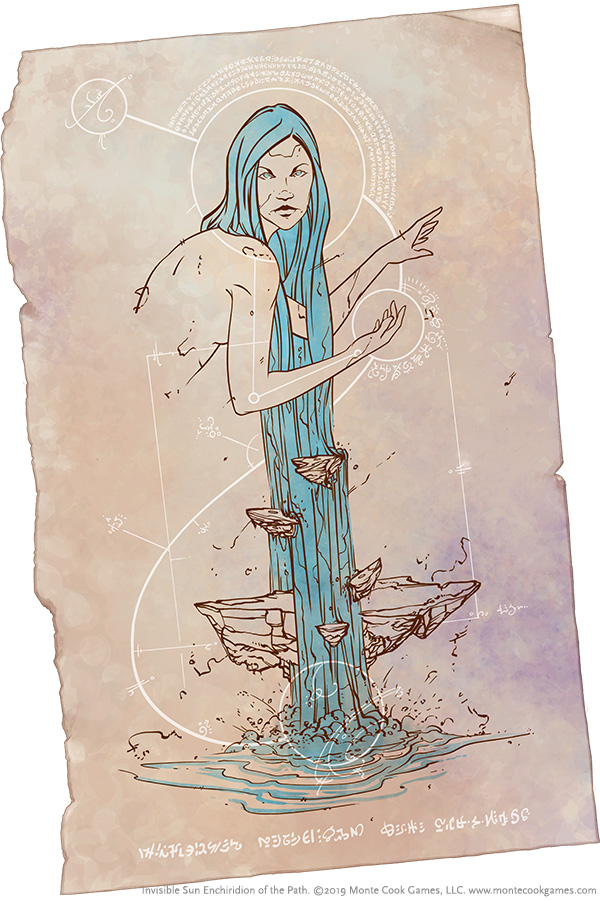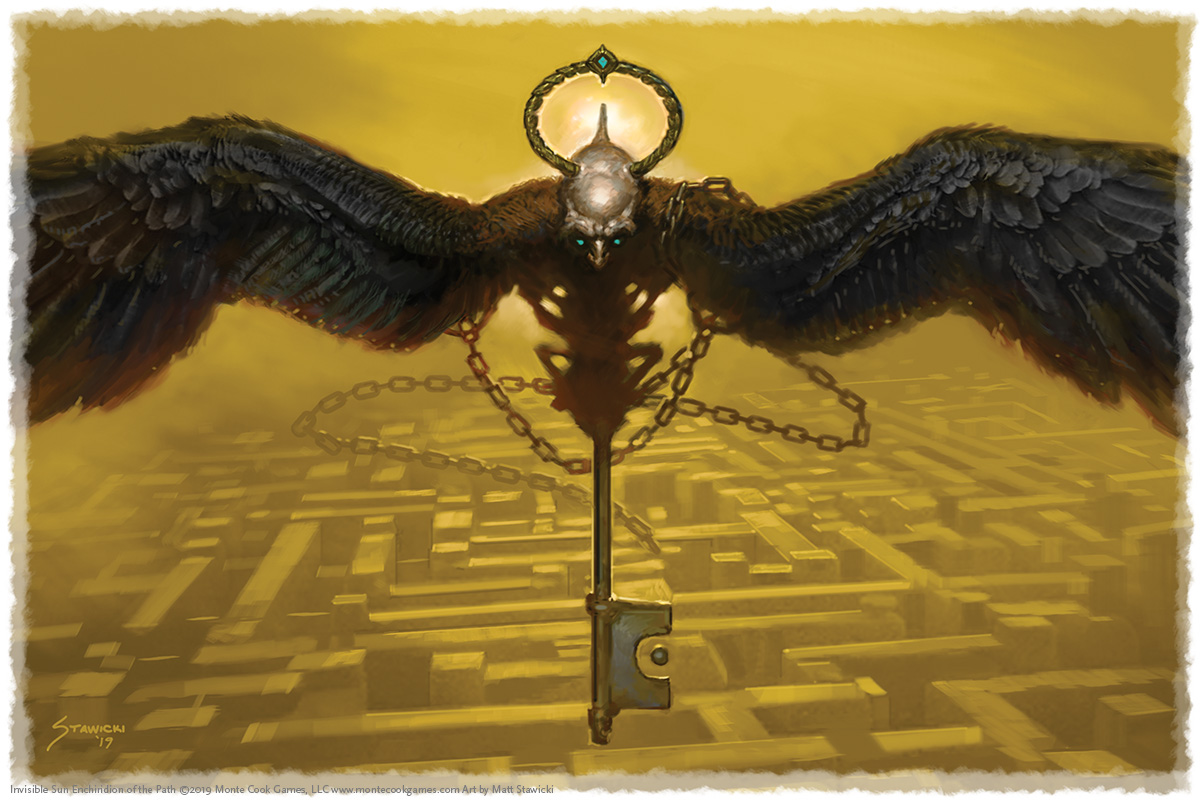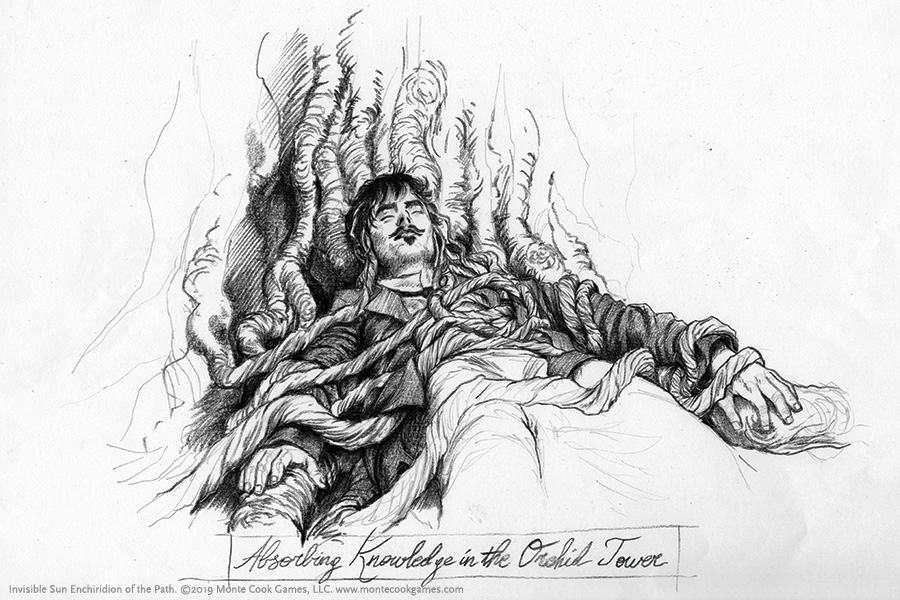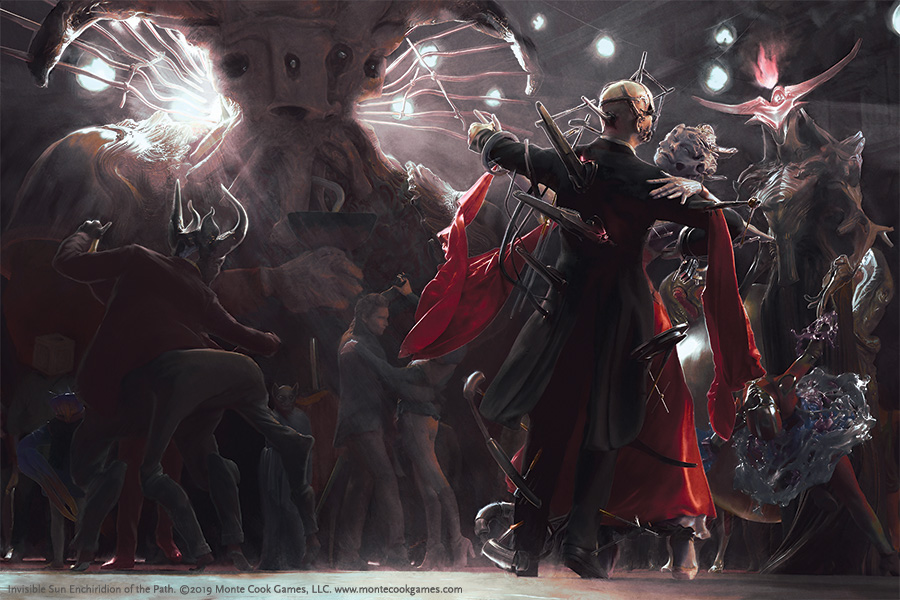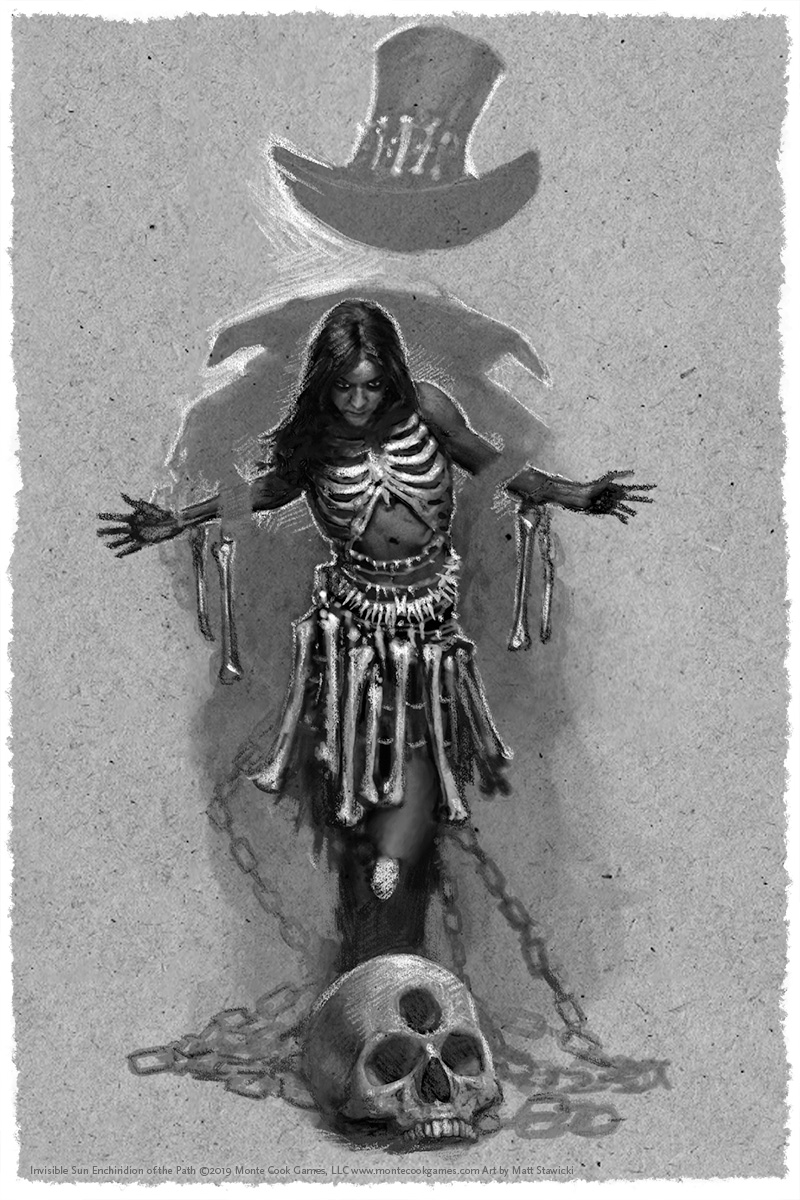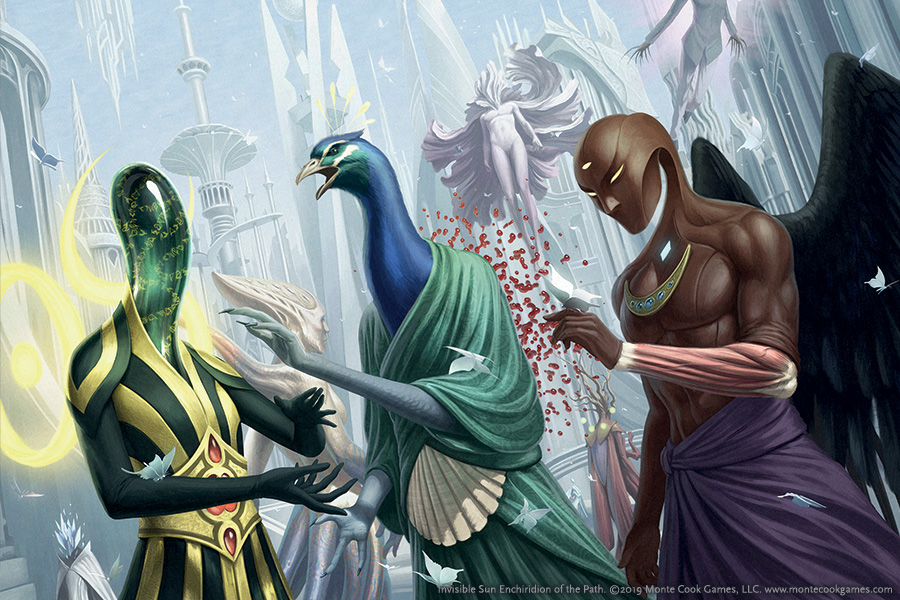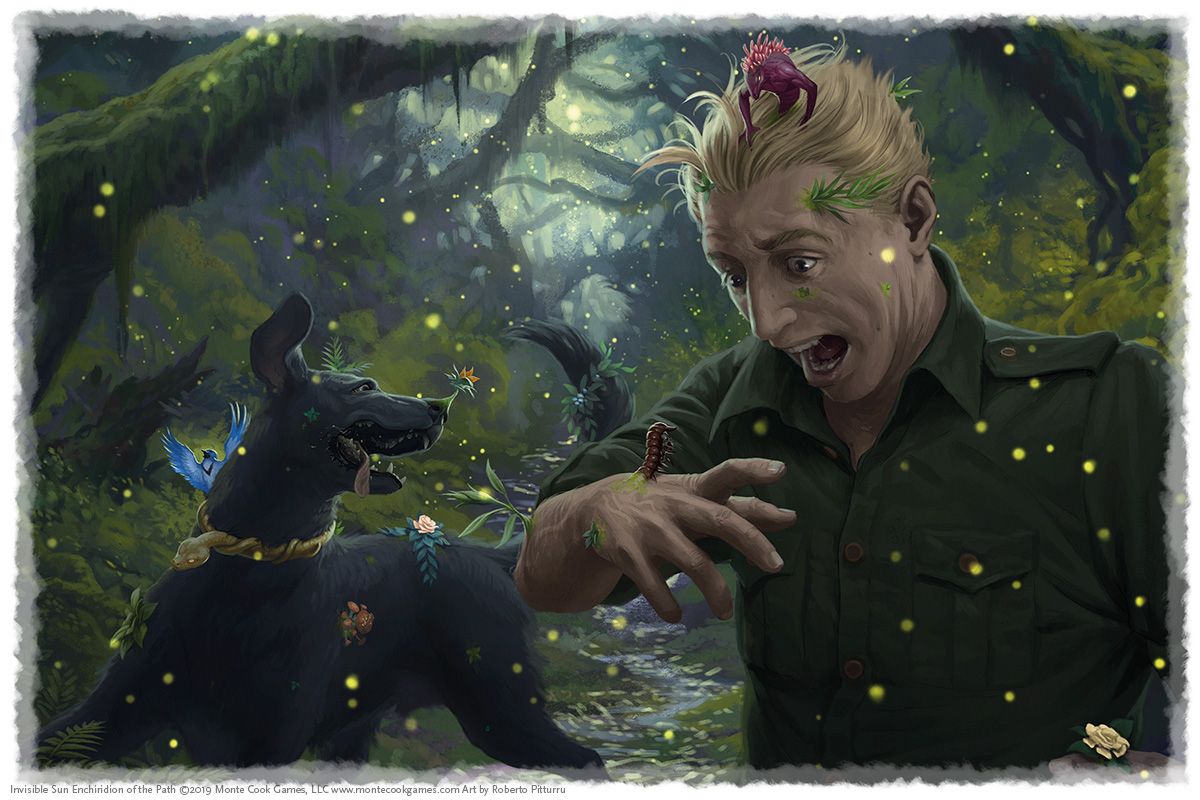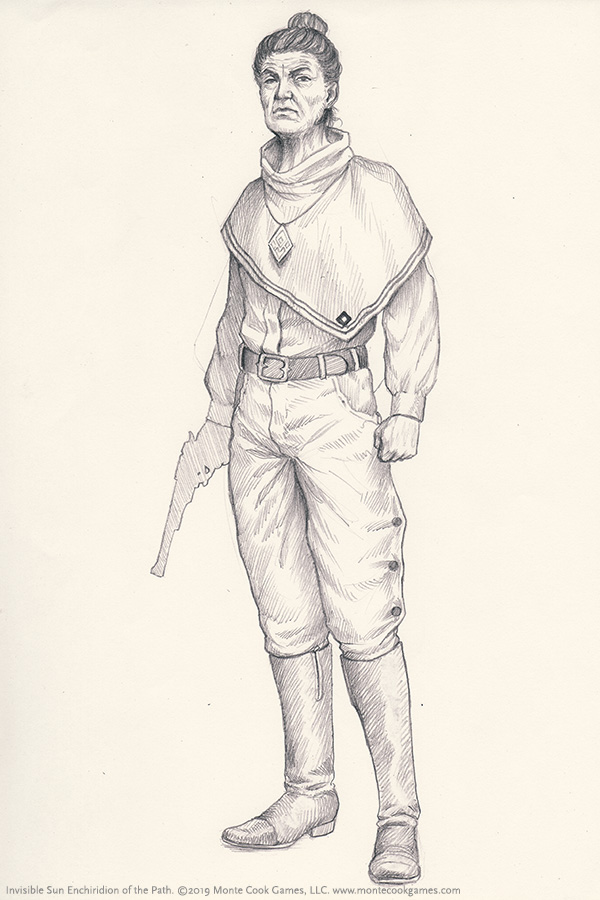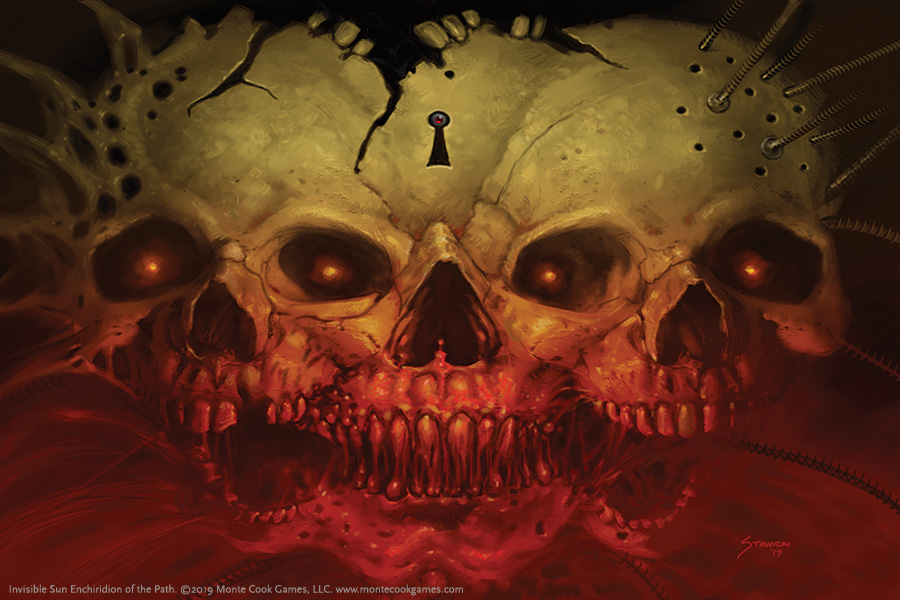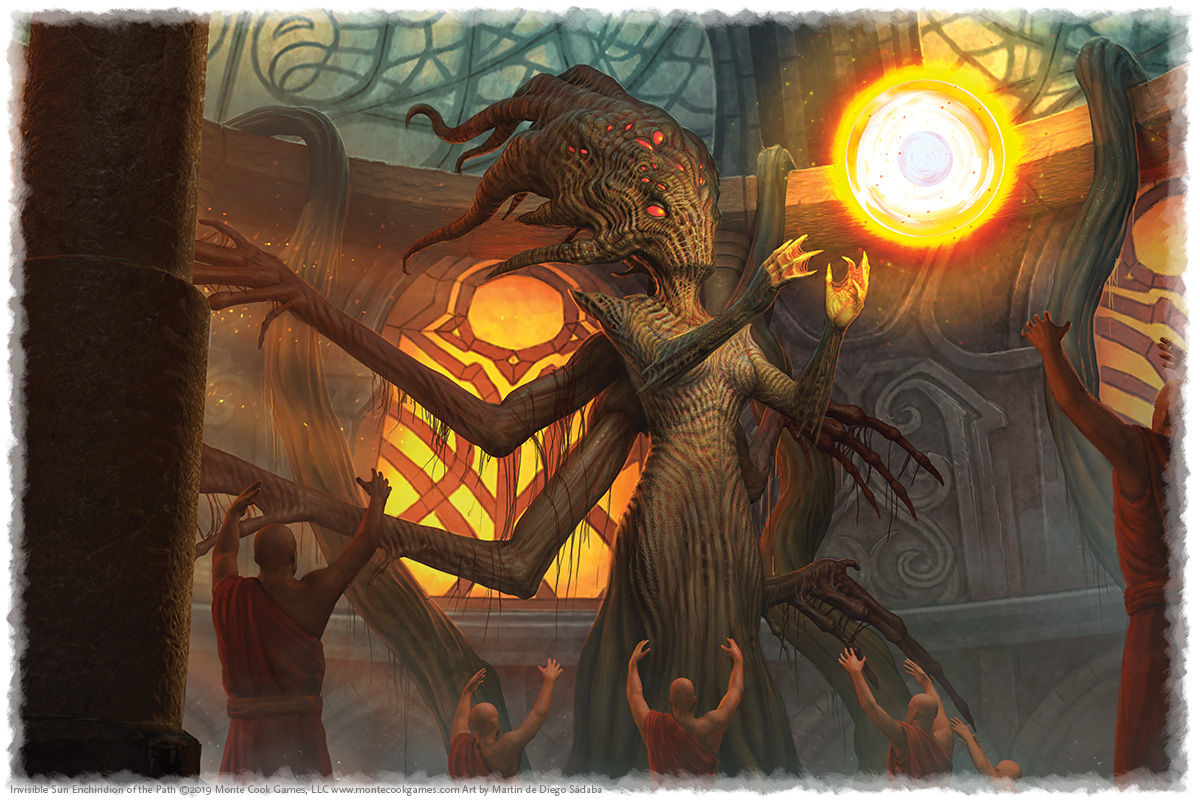In this series of articles, members of the team here at MCG look back at products we’ve released over the past decade and talk about their personal experiences in their creation, and the influence the titles have had on them as gamers, professionals, and just, well, people. It’s part of our celebration of Monte Cook Games’s first ten years. In this post, Art Director Bear Weiter talks about one of his favorites so far: Enchiridion of the Path.
You can read other articles in this series here.

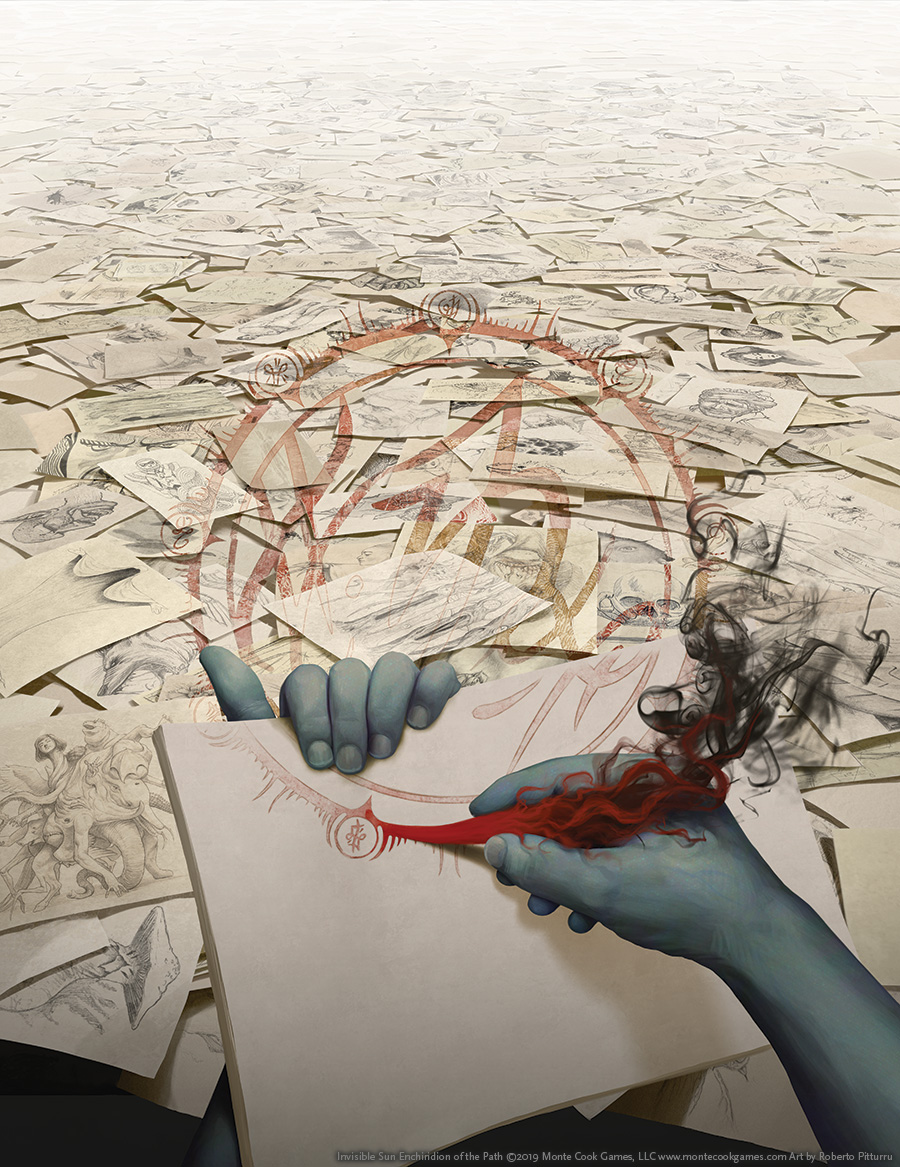
What does it mean to “use” a book? With most books, we talk about reading them or wanting to read them—their use, so to speak, is to facilitate the transfer of information through the consumption of the words on their pages. Certainly, that’s the case with game books as well. You might read them from cover to cover, absorbing rules and settings as an intertwined whole, feasting on the imaginative interconnectedness of all the words. Sometimes it’s more selective, focusing on certain chapters appropriate to your current needs, while skimming or skipping over other parts. But game books also get used—they’re at the game table, waiting patiently to be cracked open for a quick rules refresher or to reference the details of a spell or a creature’s special attack. You can use the books in other ways, too—as a nice stand for your game minis, a solid paperweight when gaming outdoors, or, horribly, as a coaster to protect that nice wooden tabletop.
But what if a book had a more usable use than that? I present to you Enchiridion of the Path.
Monte Cook Games, and of course Monte Cook himself, are no strangers to prop products. From Monte’s Ptolus, with its dozens and dozens of handouts included within a packet in the back of the book, to Invisible Sun and its three meaty envelopes of handouts and props, there’s a love for the physical at the heart of MCG. One of my favorite products we’ve ever produced is the Invisible Sun Prop Set 2, with its variety of handouts, on an assortment of materials, including actual newsprint paper—hand-torn, no less. These products are meant to be handled, to be used.
Enchiridion of the Path is much like that, but it’s different, too. It’s a book in that it’s a bunch of pages, organized and bound together in a particular order. But picking it up would quickly tell you that this thing is its own beast. First off, there are no page numbers, though it clearly has an order to it. The book is spiral bound, something you don’t see in many game books outside of journals and notebooks. In some ways it reminds me of my very early gaming days when I’d keep a bunch of photocopied pages—character sheets, maps, other reference material—in three-ring binders. Enchiridion feels like a binder, though a much fancier one than those I got from my parents at the time (industrial binders, not the Trapper Keepers from the 80s). Opening Enchiridion, however, reveals its true genius—and possible horrors: each of the pages is perforated.
Yes, you read that right—you tear out the pages.
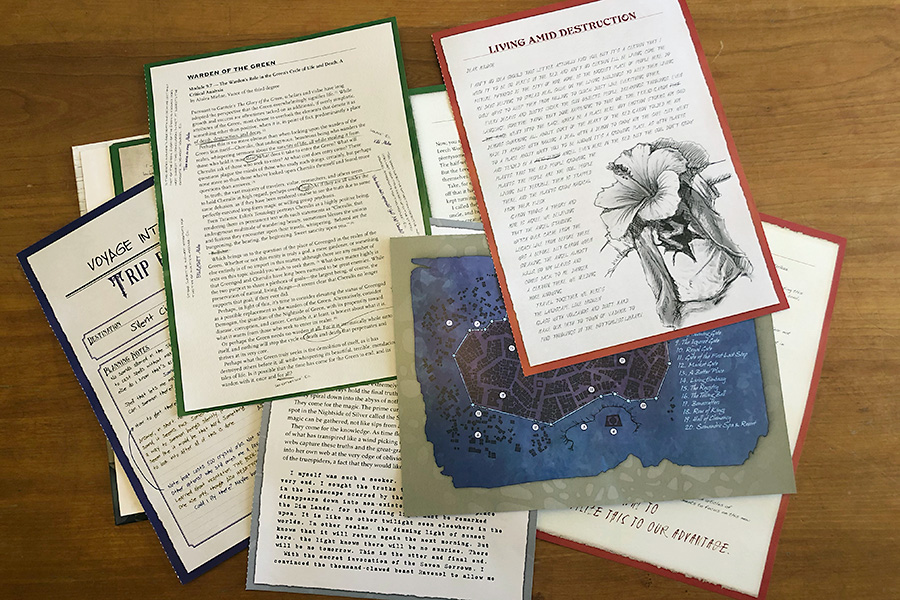
Enchiridion of the Path subverts the idea of using a book to something that almost feels heretical. Books are customarily handled lightly and treated with reverence. You show off your book collection and the pristine nature of particular tomes. (Up until one of the later production cycles on the new versions of Ptolus, my collection contained a shrink-wrapped, never-opened original of Ptolus—I felt the heartache in my soul when I cut that plastic outer-wrap and opened the book. And it has only been opened a few times since then.)
But I delight in the nature of Enchiridion. Its whole purpose is to be used. Monte even taunts the reader in the section How to Use This Strange Book:
But to get back to using Enchiridion of the Path properly—if I see you at a convention and you’ve got this book and it’s still intact, I’m going to make fun of you. Just be forewarned.
From Monte Cook’s introduction to Enchiridion of the Path
It’s right there—use the book, tear out the pages. And then put them into the grubby hands of your players.
And it’s not just for players. GMs should find inspiration for their game throughout the pages of Enchiridion, and help steer their players—who can then be rewarded with a page or two from directly within this book.
Naturally, there’s a reason for this—the game of Invisible Sun is all about secrets and knowledge and learning new things. As such, you are encouraged to research new topics, and these pages represent what is learned from that endeavor, visually represented in a way that should feel authentic and fitting to the world within. There are research papers, journal excerpts, incident reports, and so much more. Each page (or set of pages) is a unique item, designed to deliver that particular bit of information in a compelling way, driving the narrative ever forward. The book covers the different Suns in a variety of ways—broad, sweeping information; focused, pointed nuggets; and everything in between. The knowledge gleaned ranges from the academic to the personal to the forbidden.
An “unboxing” of Enchiridion of the Path showing off the unique presentation.
As Art Director, my role was to bring the product to life visually. Some of this came through decisions in art styles—we used more black and white drawn art than we typically do to suggest they were sketched directly onto the page. Other choices included an extensive use of various fonts and handwriting fonts (and actual handwriting), as well as hand-drawn markings on some of the pages. My favorite design elements, though, are the pages themselves. Because this is still a traditionally-printed book (with all of the paper being the same stock and coating), I needed the pages to appear as if they were from different sources. Ultimately, I came up with more than a dozen different page designs that I could place on colored backgrounds for each Sun-based section. There were parchment papers, paper from linen and canvas, watercolor paper, and much more, all with various edging—torn, deckled, ragged.
The capstone to all of this comes by way of the beautiful cover illustration by Roberto Pitturru, who captured this sense of individual pages with a never-ending plane of drawn and torn-out pages—pages strewn everywhere, just like you should end up having with a well-used copy of Enchiridion of the Path.
Additional art from Enchiridion of the Path—just a small taste of the unique imagery.
If this sounds too painful, of course, you can grab a PDF version as well. Print out particular pages for your players and keep the pristine copy on your shelf. I get it, and understand this temptation. But know that you are missing one of the important visceral experiences—intentional experiences—to this rather special product. Go ahead, tear out one of those pages. Feel weird? Feel wrong?
Good. Now tear out another.
Bear
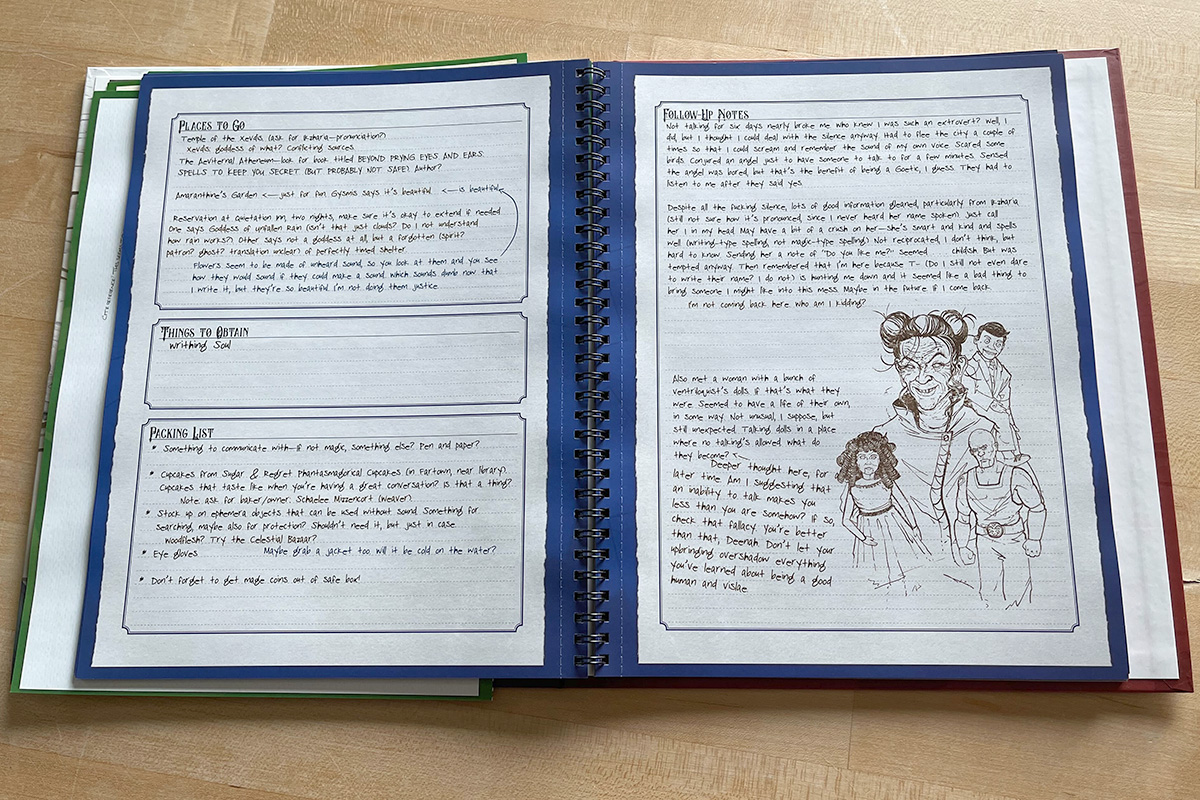
Enchiridion of the Path, by Monte Cook, was funded as part of the Invisible Sun—Return to the Actuality crowdfunding campaign on Kickstarter in 2018, which also funded a reprint of the Invisible Sun Black Cube. Enchiridion of the Path was released in 2019.
